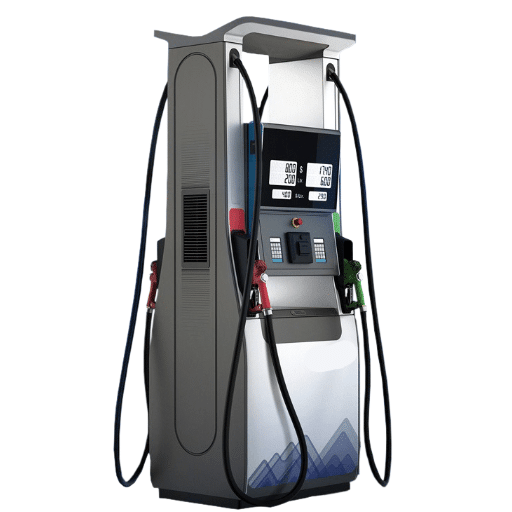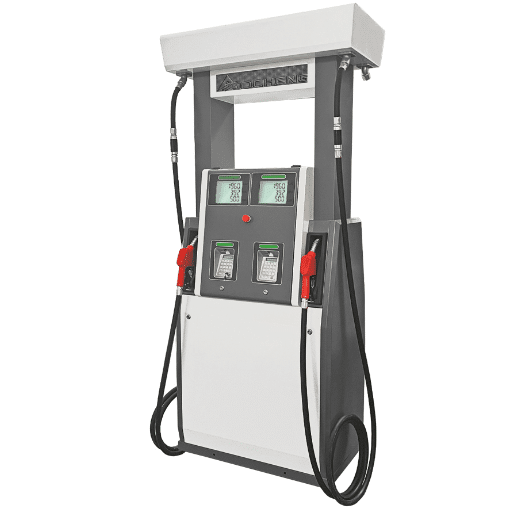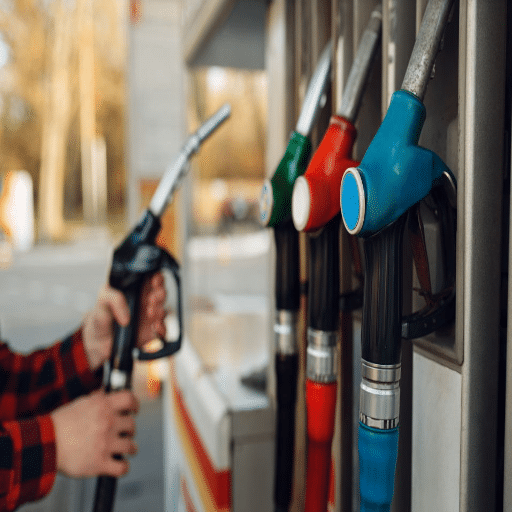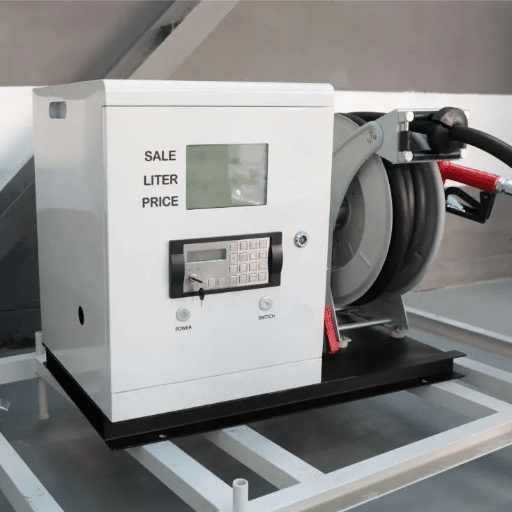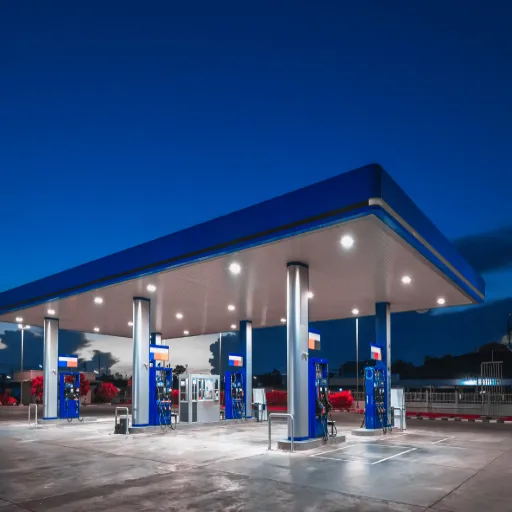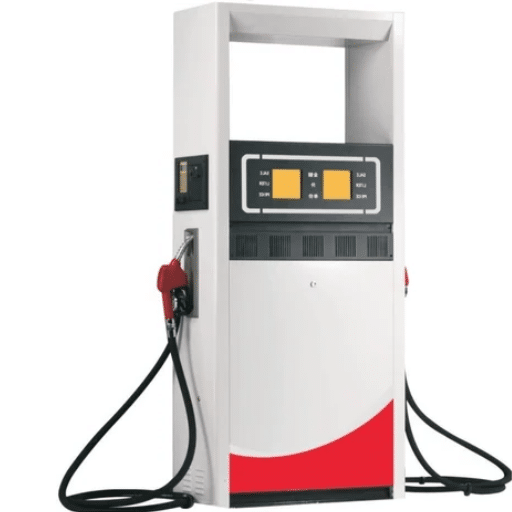There is a perception of gas stations as mere stops for fill-ups and mini snacks for car-travelers; well, on the contrary, they actually run the gamut in operating, a fairly lively business operation with an array of revenue streams. Washing under the gasoline pumps and the convenience store shelves, gas stations come with so many money-making streams that very few patrons can identify all of them. How much does a gas station really make? Or what influences gas stations‘ earnings? This fascinating foray into the financial aspects of gas station businesses considers key revenue streams, market trends, and problems owners are faced with when attempting to increase profitability. Whether one is eyeing the business or just bitching, this article will give some shades of knowledge about running a gas station as a business.
Understanding Gas Station Revenue
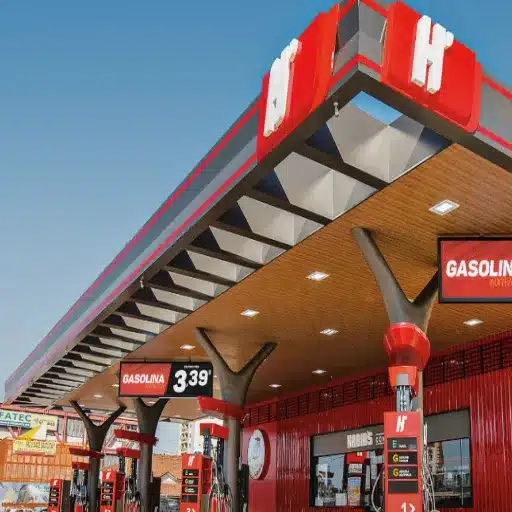
Gas stations generate much higher revenue from fuel sales, convenience store items, and services such as car washes or repair bays. Typical businesses earn the bulk of their revenues from fuel sales, but profit margins on gasoline really are tiny owing to wholesale price fluctuations and competition. Convenience store sales, including snacks, drinks, and sundries, tend to have higher profit margins and are an important source of income, indeed. Other services can also be very profitable, such as car washes, depending on location and demand. The blend of said income sources contributes to keeping gas stations operational and generating continuous income.
Primary Revenue Streams for Gas Stations
Fuel Sales
Primary revenue source with 5-10¢ profit per gallon
Convenience Store
High-margin items with 30-50% profit margins
Car Wash Services
Average annual revenue of $86,531 per location
Additional Services
ATMs, EV charging, partnerships, and loyalty programs
What Revenue Streams Do Gas Stations Have?
Gas stations have revenue streams that extend beyond the sale of gasoline. Although fuel often accounts for a majority of sales volume, such sales often come with relatively lower profit margins due to competitive pricing and fluctuating oil markets. The latest industry reports state that gasoline profit margins are, on average, between 5 and 10 cents a gallon after overhead.
Convenience selling constitutes another important revenue stream. Items such as snacks, drinks, and tobacco products tend to enjoy higher profit margins, sometimes in the range of 30-50%. Besides standard retail, gas stations often offer premium products such as gourmet-grade coffee or freshly-prepared foods, which respond to evolving tastes and create an opportunity for incremental sales.
Car wash services are another very prominent source of revenue. Automated car washes have very low operating costs when installed, generating very steady income. Adding a car wash, according to recent market trends, can increase annual revenue by thousands of dollars, especially if the area is dense with city and suburban traffic.
Promoted partnerships and auxiliary services are other sources of a gas station’s revenues. These include setting up and hosting ATMs, selling advertising space, or even EV charging stations, whose popularity is rising with the growth of EV adoption. On top of this, certain chains offer loyalty programs and reward systems that promote bringing customers back around and help sustain income streams.
Therefore, by distributing income resources, gas stations stand a better chance of staying profitable and resilient in a highly competitive market.
How Much Does a Gas Station Make from Fuel Sales?
Fuel Sales Profit Reality
Average Profit: 10-15 cents per gallon after expenses
Example: At $3.50/gallon, station owners earn minimal profit due to high operational costs
Fuel sales earn a big share of gas station revenue, but the actual profit margins on fuel are quite slim. On average, a gas station would profit between ten and fifteen cents a gallon after paying for expenses that include crude oil, refining, distribution, and taxes. This figure can vary from location to location, depending on competition and the current market conditions. Operational costs like wages of employees, utility bills, maintenance, and fees charged for credit card transactions eat away at the net profit derived from fuel sales.
For example, at a given price of $3.50 per gallon, the station owner would earn very little, if any profit, due to the huge costs incurred. Many gas stations try to counterbalance these thin margins by relying on sales inside the store for snacks, beverages, and other convenience items, which generally have much higher margins. This dual source of income helps sustain gas stations against the challenge of fluctuating gas prices and volatile market conditions.
Fuel Sales as a Primary Revenue Source
Fuel sales constitute one of the major sources of revenue for gas stations, often contributing a sizable percentage of their total income. It has according to recent data been reported that approximately 135 billion gallons of gasoline are sold annually in the United States, thus earning the gas stations a huge sum of revenue. Yet profit margins on fuel sales are usually low, averaging about 3 to 5 cents per gallon after taking into consideration the wholesale price of fuel, transportation, and credit card fees.
Gasoline prices are subject to influences from any number of factors, such as crude oil prices, refining costs, distribution expenses, and taxes that go into the system. Global oil price trends in 2023 were one of the main factors determining retail prices for fuels. Thus, in many ways, vehicles through and through need a steady influx of gasoline, which can be sold cheaply by volume and whose profits are realized by making complementary sales like a purchase of convenience store items or through bundled promotions.
The competitive nature of the industry, which pushes the gas stations to innovate and adapt to new changes, means many stations have gone into the development and deployment of technologies such as fuel loyalty programs that give discounts and incentives to frequent customers. Furthermore, with mobile payments becoming more common and fuel delivery services taking shape, all of this helps increase customer retention and the money it can generate. Together, this creates a stable yet ever-evolving nucleus upon which fuel sales underpin gas station profitability.
Additional Revenue Sources for Gas Stations
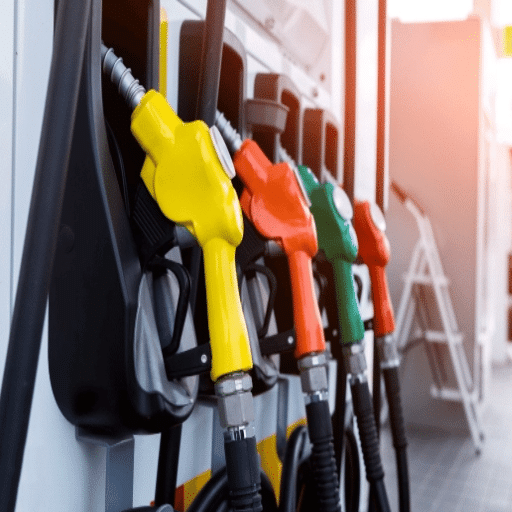
Gas stations generate revenue through a variety of supplementary avenues beyond fuel sales. One major source is convenience stores, which contribute significantly to overall profits. Industry figures suggest that convenience stores sometimes yield more than 60% of the gross margin of a gas station. It would therefore be high-margin goods such as snacks, beverages, prepared foods, and tobacco products contributing to this opportunity. Another reason for encouraging customers to spend more during these stops is to ensure there is a wide choice of popular products.
Car washing services are good revenue generators, often integrated into gas station operations. They generally have a higher profit margin than fuel sales and are showing an upward trend in customer demand. According to industry reports, depending upon variables like equipment and location, automatic car wash services have an average annual revenue of $86,531 per location.
Furthermore, gas stations partner with food franchises or quick-service restaurants to attract customers. The provisioning of these products gives an additional avenue for income and enhances customer foot traffic. Lottery ticket sales and ATM fees constitute other income streams, as customers often use such services during their visits.
By taking these diversified revenue sources in consideration, gas stations design a sustainable business model wherein the stresses of volatile fuel prices are lightened and provide for consistent profitability.
Additional Revenue from Convenience Store Sales
Convenience Store Impact
- Annual U.S. Revenue: $650 billion from convenience stores
- Customer Behavior: 44% of fuel customers make additional purchases
- High-Margin Items: Bottled water, energy drinks, frozen meals
- Trending Products: Prepared foods and premium coffee
From being a source of revenue and complementing prospects for profitability, convenience stores have morphed since then into the spectacular stars of most undies in the gas tide location. Recent industry data places the convenience-store revenues in the United States at a height of $650 billion per annum, with dollars from fuel station locations forming an important chunk in the sales. Snacks, beverages, and essential groceries remain a staple, whereas prepared foods and coffee have recently become fashionable, appealing to customers on the go searching for convenience.
This further shows how industry research highlights the behavior that consumers seem to spend more on convenience store items when they stop to put gas in their car, with 44% of fuel customers making additional purchases. Selling high-margin items such as bottled water, energy drinks, and frozen prepackaged meals has indeed proved to increase revenue maximization. Mixing in more diversified product offerings coupled with promotional offers such as bundled deals is a clever play by gas stations on consumer mentality, turning the convenience store into a profit center.
Other Revenue Streams: Car Washes and Services
Car Wash Market Growth
Global Market Value: Expected to reach $41 billion by 2030
Growth Rate: 3.1% CAGR
Annual Revenue Range: $86,000 – $115,000 per location
With the gradual enhancement in their profit generation, the car-washing adjunct has become what might be considered a revenue source for gas stations. The worldwide car wash services market is forecasted to attain $41 billion by 2030, 3.1% CAGR. This car wash (automated or self-service) facility gives convenience to customers, promotes repeat visits, and builds loyalty for customers. On average, an in-bay automatic car wash can generate revenue in the range of $86,000 to $115,000 per annum, depending on location and usage.
The more services a gas station can provide for consumers oil changes, tire inflation stations, or simple vehicle maintenance the more consumers will be attracted, converting the gas station into a multi-service center. Research has found that car owners will be willing to pay for supplementary services that are offered in conjunction with the simple activity of filling up their car with gas, especially when the service is intended to save the customer time. Alongside modern trends, such as environmentally friendly car wash systems that have built-in water recycling technology, gas stations are positioned to generate profits while also contributing to environmental protection.
Profitability of Gas Stations
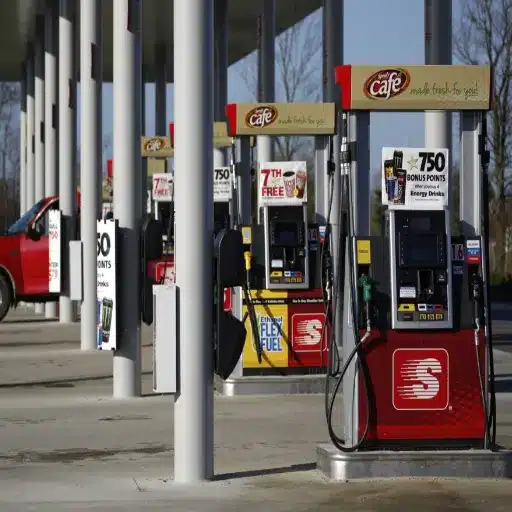
Profitability for a gas station is largely generated from a combination of fuel sales, ancillary services, and efficient business operations. Fuel is sold, while on the other hand, the profit margin is very low on fuel. So, gas stations make more profit from complementary services such as a convenience store, car wash, or vehicle maintenance. Customers using these services will thereby be drawn into visiting more often and spending more while there. From their side, other measures to save costs that include energy efficiency in all equipment, sustainable practices, and so on would continue to reduce the operating cost and hence increase the profits of the business.
Understanding Profit Margins in the Gas Industry
Profit margins in the gas sector are technically affected by both general outside variables and company-specific factors. While crude oil prices are therefore an important factor in fuel price determination, they fluctuate depending on market trends. If there is turmoil in some area, disruption in the supply chain, or a change in OPEC policy, crude oil prices tend to skyrocket or plummet, thus bearing directly on the cost of operations and profitability.
Taxes and regulations heavily affect gas-station profits. In general, taxes on gasoline exist at the federal, state, and local levels, and these greatly contribute to what the customer finally pays at the pump. To give an example: As of 2023, the average combined federal and state tax on gasoline is nearly $0.57 per gallon, with some states like California having higher prices because of their harsher environmental fees.
Another key factor is operational efficiency. Stations that invest in advanced technologies, such as automated fuel dispensers, or warehouse management based on data analytics-inventory, and staffing-often witness higher profit margins. For instance, a well-run convenience store accounts for 30-50% of the total revenue of a gas station due to its higher margins than fuel sales.
Seasonal demand fluctuations imply shifts in profitability. Gasoline consumption attains its maximum during the summer when the frequency of travel increases, with a special emphasis on holidays. Industry reports suggest that their retail gasoline sales spike by 5%-10% during peak travel periods, thus giving operators an opportunity to ramp up revenue generation.
Lastly, the emergence of alternative sources of fuel, such as EV charging, has become a big consideration. By having charging facilities for EVs, the gas stations will be able to attract a diversified clientele and hence stay relevant in an ever-changing market. Fuel stations that offer EV charging services can increase their profit margin by some 20% by the year 2030, indicating another long-term growth opportunity.
By working around these issues, gas stations can keep good profit margins in a highly dynamic and sometimes volatile industry.
Average Net Profit for Gas Station Owners
Gas Station Owner Earnings
Average Annual Income: $40,000 – $100,000
Net Profit Margin: 1.5% – 3%
Fuel Profit: $0.05 – $0.15 per gallon
Typically, a gas station owner has an average net profit margin of 1.5% to 3%, placing it among the low-grossing industries. While fuel sales comprise the majority of cash flow, profit margins from fuel are relatively lower… fluctuating oil prices, very costly operational costs, and competitive pressures on prices. A station makes about $0.05 to $0.15 per gallon of fuel sold on an average sale.
Nevertheless, the profitability of gas stations often rests, by and large, upon non-fuel sales within an attached convenience store. Convenience stores may account for 30 to 40% of the profit available at a gas station, and the products sold in these establishments usually have higher margins than fuel. These include snacks, beverages, tobacco, and other convenience items. Also, services such as car washes and charging stations for electric vehicles are becoming increasingly popular for generating additional income.
Profitability is influenced by a location’s geographic setting-the sites in a busy urban or highway area usually get a higher sales mark than competing rural places. Thus, owners of gas stations can enhance their net profits strategically, while remaining focused on evolving trends like EV charging, through diversifying their earnings and cashing in on these trends.
Calculating Net Profit Margin for a Gas Station
Net Profit Margin Calculation
Example Calculation:
| Component | Amount |
|---|---|
| Annual Revenue | $1,000,000 |
| Operating Expenses | $950,000 |
| Net Profit | $50,000 |
| Net Profit Margin | 5% |
To determine the net profit margin of a gas station, it first needs to consider total revenue and then look at the expenses that were incurred to generate the revenue. Total revenue would include all earnings from selling fuel, selling goods in the convenience store, running the car wash, and other services like EV charging or repair services. Expenses equal operating costs that include the cost of fuel, rent, payroll, utilities, maintenance, and taxes.
Suppose a gas station generates $1,000,000 in revenue (gross) on an annual basis, whereas operating expenses kick in at $950,000. Then the pure profit is $50,000. With the formula at hand: ($50,000/$1,000,000) × 100 = 5%
Generally, the Net profit margin for a gas station varies between 2%-10%, depending on the setup of the location, offered services, etc. The owner can enhance these margins by working on inventory optimization, cutting down unnecessary costs, and maximizing income earned from high-margin services, for instance, convenience stores. Fuel sale in general gives a very thin margin, and non-fuel services and other diversified activities increase the profitability significantly.
Maximizing Revenue for Gas Stations
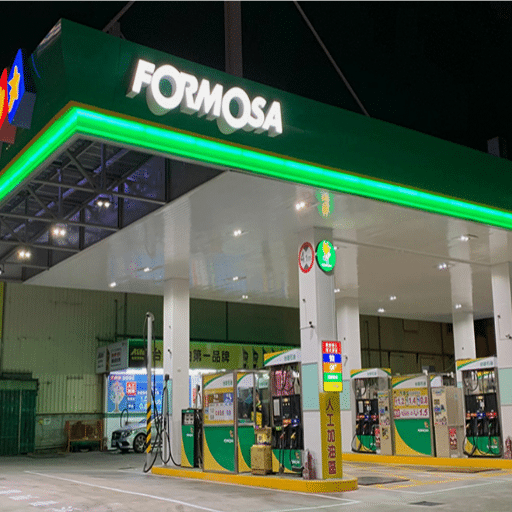
Key Revenue Maximization Strategies
- Diversify Convenience Store Options: Offer a variety of items with huge margins: snacks, beverages, and household necessities. Such items drastically increase general sales and profits.
- Introduce Services: Offer car wash, air pump, or lottery ticket sales. These attract customers and provide further revenue avenues.
- Price Fuel to Maintain Traffic: Watch the competition closely and use its prices to pull traffic. Strive, however, for a fair equilibrium between volume and price margins.
- Customer Experience: Keep premises clean and well-lit, and maintain friendly customer service to woo patrons back.
- Use Loyalty Programs: Introduce reward or membership schemes with an aim to keep customers and promote their future purchases.
If gas station owners pay attention to all these strategies, they will be able to considerably increase their revenues while keeping customer satisfaction intact.
Tips for Boosting Gas Station Revenue
🚀 Offer Diversified Services
Go beyond the sale of fuel by installing and offering car washes, tire air stations, or repair services. Diversifying into ancillary services can entice a variety of customers and offer more revenue streams.
💰 Set Competitive Fuel Prices
Employ software that tracks rival prices and market trends to maintain competitively priced fuel. This way, customers are encouraged to buy from your station rather than others while maintaining healthy margins.
🏪 Enhance Convenience Store Offerings
Carry hot-selling items, such as snack foods, beverages, and hot food. Collaborate with trendy brands or local businesses to showcase unique items that would distinguish you from competitors.
📱 Consider Digital Marketing
Employ social media platforms, targeted advertising, and customer reviews to promote your gas station. Provide special deals or discounts to followers to boost awareness and customer loyalty.
🌱 Support Sustainability
Installing an EV charging station or offering environmentally friendly merchandise could attract green-conscious clientele. Position your station as being ahead of its time.
🤝 Provide a Venue for Community Events
Arrange for small-scale activities to be held at the station, such as car shows, fundraisers, and local meetups. This will build business loyalty and cement stronger community ties.
Gasoline station operators who adopt these strategies will definitely set up a competitive edge, raise profitability, and yield long-term value to their customers.
Strategies to Increase Profitability
Advanced Profitability Strategies
- Optimize Fuel Pricing: The gas station should closely follow the general market trend and prices of competitors to adjust its own fuel prices accordingly so as to further increase profits. Automate the pricing process using technology to maintain competitive prices without having to lose margin.
- Create Alternative Sources of Income: Boost services with car wash or convenience store operations, as well as food and beverage offerings. These avenues for additional income from fuel sales increase opportunities to appeal to people.
- Create Loyalty Programs: Start customer loyalty programs, encouraging repeat business. One would discount, reward, or provide points for purchases with the station as an option for clients going back there.
- Spend on Technology: POS systems and other technological developments could be adopted to make operations smooth and create convenience for the customer. In addition, technology could help with marking inventory and trend analysis.
- Enhance Energy Efficiency: A major chunk of contractors’ budgets goes to equipment, various forms of lighting, and so on. It would be good if we consider installing energy-efficient lighting and equipment. Solar panels can probably be considered if it makes dollar sense. We should consider a sustainable approach to keep utilities on the lower side; we would want to attract green-minded customers.
- Go Hard at Marketing: Target the local social media community with paid advertising, promote events, and sponsorships. Promoting unique services or products can lend value to the branding identity of the particular area.
- Customer Experience: Create a swift service with shiny-clean premises and friendly staff to leave a positive impression. With an excellent customer experience, enthusiastic word-of-mouth referrals come in handy, thus creating an excellent personal network.
By way of these strategies, gas station owners would turn more profits and support growth and customer satisfaction.
The Importance of Customer Experience in Boosting Sales
Customer Experience Impact Statistics
- 86% of customers are willing to pay more for better customer experience
- 80% of shoppers prefer businesses offering personalized experiences
- 90% of customers rate immediate response as highly important
Customer experience is becoming the main consideration in consumer behavior and thereby the sales factor. Research indicates that 86% of customers are willing to pay more to go the extra mile, hence the direct influence on the profits. Positive experiences build strong customer relationships that go a long way to develop trust and ensure loyalty from customers. By contrast, loyal customers do buy on more frequent occasions and also serve as dignified mediators on behalf of the brand through recommendations to attract new clientele.
Another thing that aids the creation of superior CX is the need for personalization. Research shows that 80% of shoppers would prefer doing business with companies that offer personalized experiences. This way, companies can prepare loyalty programs, promotions targeted at customers, or online engagements based on customer preferences to make them feel exclusive and rewarded.
Moreover, the speed of service is a critical element here. Surveys show that 90% of customers rate an “immediate response” as highly important when questions and/or concerns arise. This means that a business has to streamline processes and invest in staff training or technology to minimize wait times and respond to the needs of the customers as fast as possible.
When a business places customers’ experience ahead of all else, sales are further driven, setting the company ahead of its competition in today’s market. Investing in customer satisfaction translates to longer-term growth and sooner revenue opportunities.
Financial Insights for Gas Station Owners
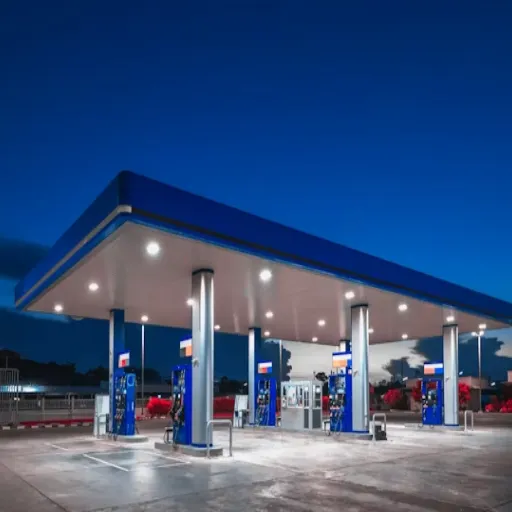
Gas station owners looking to boost profitability should synthesize and implement multiple strategies. Among the strategies, they should prefer stimulating convenience store sales, since those sales typically have higher margins than fuel sales. Various items high in demand should be sold, such as snacks, drinks, and essentials. Cross-promotions should also be instituted, such as discounts on convenience store products when a certain volume of purchase of fuel is purchased.
Stay on top of pricing trends fuel-wise to maintain competitiveness while remaining reasonably profitable. Enrollment in loyalty programs or setting up your own rewards programs creates repeat business. Of course, reducing operating overheads, including energy consumption and facility upkeep, by installing energy-efficient lighting or setting up maintenance programs will have a huge impact on profits.
Annual Revenue Expectations for Gas Stations
| Location Type | Annual Revenue Range | Key Characteristics |
|---|---|---|
| High-Traffic Urban | $2+ Million | Prime locations, heavy traffic volume |
| Average Well-Located | $1.5 – $2 Million | Good visibility, moderate traffic |
| Small Rural Stations | $500,000 – $1.5 Million | Lower traffic, limited services |
Annual revenue for gas stations can vary wildly depending on location, traffic volume, and added services. On average, a well-located station in the U.S. could have annual revenues of anywhere from $1.5 million to $2 million, with smaller rural stations being on the lower end and high traffic urban centers above these averages. Most typically, a significant volume of sales comes from fuel, while the profit margins on fuel remain very low. The higher-profit items that complement fuel sales include convenience store items, snack foods, and drinks that are critical to gross income. With reasonably priced goods and services, excellent service, and some extra offerings such as a car wash or minor auto repairs, a gas station can greatly maximize its returns in a year.
Reference Sources
“THE EFFECT OF FACILITIES AND SERVICE QUALITY ON CUSTOMER SATISFACTION OF GAS STATION”
“Evaluation of the internal control system for inventory AT UD Nina Usman SPBU”
“Optimizing Number and Locations of Alternative-Fuel Stations Using a Multi-Criteria Approach”
Frequently Asked Questions (FAQs)
How much does a gas station earn in revenue every year?
The average revenue of a gas station can vary greatly depending on the location, size, and services rendered. Basically, a gas station can bring in gross revenues between $300,000 and $1 million a year. As profitability hinges on aspects such as traffic volume and demand, it will become imperative for a gas station owner to assess their own market situation.
What is the average profit margin on fuel sold at a gas station?
Gasoline is sold for net profit margins generally low at 1% to 3%. Many gas stations will also seek to improve their profitability by creating additional sources of revenue through the sale of convenience store items or auto repair services.
How would owning a gas station affect the revenues?
Your gas station can generate numerous revenue streams, from fuel sales to convenience store sales to auxiliary services. Gas station ownership can prove to be quite lucrative; however, it is the diligent management of expenses, licenses, and permits that will culminate in optimizing net profit.
Inject various revenues into a gas station operation.
Before making the gas station earn, different operations often include the following: sale of fuel, convenience store, auto studio, and EV charger installations. Diversification of revenue streams mitigates risks and gives gross revenue an upward push.
How do gas stations attract more traffic?
Gas stations attract traffic by allowing cheaper prices for fuel, offering just about any discount on fuel, running loyalty programs, or simply enhancing the customer experience with some extra services. If loyal customers are established, they will not have much fear about traffic and earnings.
What are the factors that determine average gas station revenue?
There are many different factors that can affect gas stations’ average revenue, including the property’s dimensions, location, competing establishments in the area, and other products and services offered to customers. The gas stations must adjust to the demands and trends of the market if they want to enhance their revenue potential.
How can a sole proprietorship gas station increase its profitability?
A sole proprietorship gas station can increase its profitability by broadening its revenue base, optimizing fuel pricing strategies according to market conditions, and working on improved customer service. Also, tax return data should be maintained, and operational costs understood to optimize net profit margins.
What is the average net profit for a gas station?
Gas stations have a certain range for average net profit. However, the majority are placed in the net profit margin of 2 % to 5 % on total revenue. This can easily be improved if greater attention is paid to other revenue streams, such as sales from their convenience stores, and service revenues from oil changes or car washes.
How do gas stations earn extra revenue?
Aside from fuel sales, gas stations generally earn another stream of income from their convenience markets and maybe car wash and auto repair services. Furthermore, a successful loyalty program would contribute to their income. Increased satisfaction of customer needs translates to higher profitability for gas station owners.

